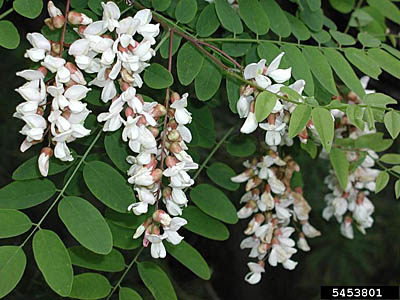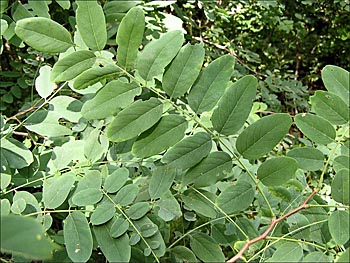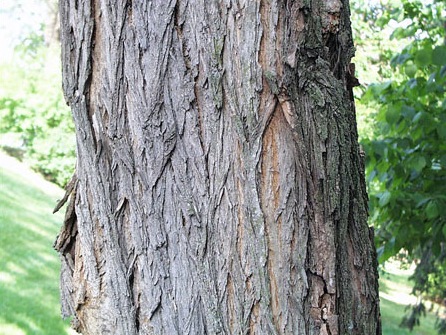Name that Tree
By Gil Medeiros, Fairfax Master Gardener
 If you selected Black Locust, you are correct!
If you selected Black Locust, you are correct!
You are probably wondering why the native Black Locust is not usually cultivated in its native range but is commonly used in cultivated landscapes in Europe. The problem is that the Black Locust is prone to several severe pest problems in the eastern U.S. but not in Europe. There are borers and leaf-miners, but the worst problem is infestation by the conk fungus (Phellinus robineae). It causes the tree trunks to deteriorate and fail catastrophically in windstorms, damaging cars, buildings and other nearby structures. Some extension services advise removal of Black Locusts, particularly from the sides of streets.

Black Locust leaves similar in appearance to those of garden peas
And get this — Black Locust has become an invasive species in some parts of CHINA where it is cultivated for its timber. So if you have ever wondered if some of our native species can naturalize on other continents, as Eurasian species do here, the answer is yes! Turnabout is fair play I suppose.

Black Locust fruit. Notice the similarity to peapods
Black Locust is a pioneer species that grows quickly in cleared or fire-damaged areas. That is why it can be found so commonly on roadsides. It can survive in a wide variety of soils. The literature reports that it can grow in soil around mine reclamation sites where the pH is as low as 2.5! This is astonishing. Consider this: horticultural vinegar (20% acetic acid) commonly used to kill top growth of weeds has a pH of approximately 2.2!

Bark of a mature black Locust
To identify the tree, look for dark gray, deeply furrowed bark on older trees and oval, oppositely attached leaves. The leaves strongly resemble those of pea plants. Not surprising, the fruit strongly resembles a peapod.
References
• Black Locust, University of Kentucky, Department of Horticulture
• Plant of the Week: – Black Locust, Latin: Robinia pseudoacacia, University of Arkansas Cooperative
Extension Service